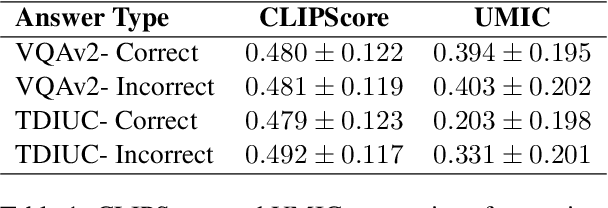An Examination of the Robustness of Reference-Free Image Captioning Evaluation Metrics
Paper and Code
May 24, 2023



Recently, reference-free metrics such as CLIPScore (Hessel et al., 2021) and UMIC (Lee et al., 2021) have been proposed for automatic evaluation of image captions, demonstrating a high correlation with human judgment. In this work, our focus lies in evaluating the robustness of these metrics in scenarios that require distinguishing between two captions with high lexical overlap but very different meanings. Our findings reveal that despite their high correlation with human judgment, both CLIPScore and UMIC struggle to identify fine-grained errors in captions. However, when comparing different types of fine-grained errors, both metrics exhibit limited sensitivity to implausibility of captions and strong sensitivity to lack of sufficient visual grounding. Probing further into the visual grounding aspect, we found that both CLIPScore and UMIC are impacted by the size of image-relevant objects mentioned in the caption, and that CLIPScore is also sensitive to the number of mentions of image-relevant objects in the caption. In terms of linguistic aspects of a caption, we found that both metrics lack the ability to comprehend negation, UMIC is sensitive to caption lengths, and CLIPScore is insensitive to the structure of the sentence. We hope our findings will serve as a valuable guide towards improving reference-free evaluation in image captioning.
 Add to Chrome
Add to Chrome Add to Firefox
Add to Firefox Add to Edge
Add to Edge